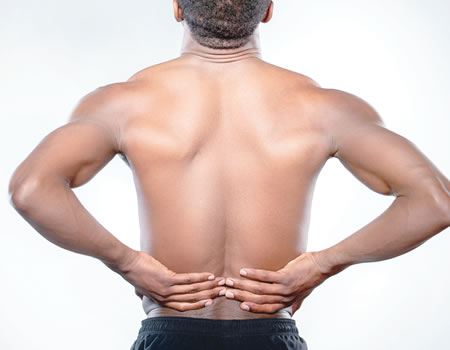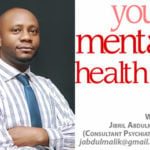Back pain can be quite difficult and is becoming an increasingly serious health issue. So, every individual affected by low back pain wants to relieve their pain. However, it’s not just the older generation, but the young adults who are facing the problem.
Unfortunately, back pain is often ignored by people thinking it to be a sign of “turning old” even though it has suddenly turned up as an epidemic with statistics showing that 80 per cent of people suffer from the problem once in their life without even realising it.
In fact, population-based study found that jobs involving lifting, pulling or pushing objects of at least 50 kilogrammes, and jobs involving prolonged periods of standing or walking were associated with a higher incidence of low back pain, especially among women.
These include catering/waiting staff, teaching staff, construction workers, traffic wardens, hairdressers/barbers, and health care workers.
Rates of low back pain vary by industry and occupation. In general, people with jobs involving heavy manual handling suffered more from low back pain and took more time off than work. But it is significantly higher in construction industries in comparison to other industries.
Dr Taiwo Soyinka, a family physician, speaking at the University College Hospital’s Health and Safety Day Symposium, stated that low back pain was highest among nurses in a study done in a hospital setting in Southwest Nigeria, which puts its prevalence in the hospital then at 46 per cent.
Although the least affected by low back pain in the hospital setting are the technologists, she stated that it is higher among nurses and secretaries due to the nature of their work and thus a reason for work-absenteeism.
Quite intriguing, she added that since the beginning of 2018, 39 men and 91 women workers at UCH, Ibadan, had come down with low back pain. It is not different either at the Irrua Specialist Teaching Hospital, Irrua, Edo State.
Experts stated in the 2017 edition of Nigerian Journal of Surgical Sciences that the occupational age groups most affected by low back pain were farmers, traders, and civil servants due to injury to the lower back, lifting of heavy objects and obesity.
Now, experts say that low back pain is commoner among those between 35 and 55 years of age, women, obese, smokers and people that are not involved in physical activity or who maintain a fixed posture like sitting for more than four hours.
Unfortunately, psychosocial stress, she added, can also lead to back pain as a result of the release of a hormone called cortisol which ends up creating a tension in the muscles of the back.
Sometimes, she added, low back pain could also be caused by a sudden force, from suddenly carrying a heavy object from the floor that affects the back.
Also, repetitive motions like pulling and pushing, poor posture and excessive whole body vibration like when travelling on a rough road, can create muscle or ligament strain, and so predispose to low back pain
A number of conditions have also been identified to cause back pain, Dr Soyinka stated, including injury such as fractures, slipped disc, infections and cancers.
She added, “back pain may be the reason a man goes to see a doctor, only to be told that it is due to prostate cancer.”
Back pain is a symptom, not a disease. Usually, people with low back pain may also experience pain, numbness, stiffness and a tingling sensation.
But there are symptoms which could indicate that the back pain is a more serious underlying condition, such as a fever or significant sweating that wakes the person from sleep or difficulty passing urine.
Back pain with numbness or tingling in the genitals or buttocks area, loss of bladder or bowel control, and loss of power in the legs can also indicate something more serious.
Cost, health-care use, and disability from low back pain, however, vary substantially between countries and are influenced by local cultures and social systems, as well as by beliefs about cause and effect, and as such, its prevention is still of public health significance.
According to Dr Soyinka, “Someone that has low back pain will not be able to go to work; it could contribute to poor mental health status, and lead to loss of productivity.
“It constitutes 40 per cent absenteeism and leads to loss of productivity in the workplace. In the United Kingdom, it tends to be about 100 million work day per year. But in Nigeria, on the average N100,000 will be spent per person for treating the condition.”
Treating low back pain is either through surgical or nonsurgical means. Such nonsurgical treatments may include spinal adjustments, corrective exercises, nutritional support and proper supplementation to help the body heal naturally as rapidly as possible.
One of the biggest challenges occupational health practitioners face in assessing the fitness for work of an employee with back pain is the fact that there isn’t a single cause, risk factor or treatment. It is often a complex interaction between lifting or forceful movements, awkward and static posture, fixed or constrained body positions, or the continual repetition of movements.
In addition to these, the employee’s individual characteristics, including age, gender, smoking habit, physical fitness, anthropometry, lumbar mobility, strength, psyche and mental well-being, other aspects of medical history, pre-existing spinal abnormalities can impact on incidences of low back pain.
Basically, certain back pains can be as a result of bad posture. So preventing such back pains caused by bad posture and bad care of the back starts with using ergonomic chairs to ensure good support for the curve of the back, said Oluwafemi Ijaola, a physiotherapist.
Sitting in a slumped or unsupported position puts a lot of pressure on the back, especially the lower region. Over time, that pressure can lead to a dull, persistent ache.
ALSO READ: Pains during s*x
He stated that it is not every chair that is good for one to sit on, saying a good chair must be able to conform to the curvature of the spine.
Also, the prevention of back pain entails imbibing proper lifting techniques. When lifting anything or doing activities that will entail going to the ground, it is important to use the knees and not the back.
According to Mr Ijaola, specific exercises that are tailored towards the back, such as back extension exercises, flexion exercises and flexibility exercises to the back are equally helpful to prevent backpain.
He added that comfortable low-heeled shoes should also be worn, as high-heeled shoes are associated with low backpain.
Mr Ijaola, however, said various misconceptions about low back pain abound. The not-so-uncommon misconception that most low back pains have a direct bearing with dysentery or ‘pile’, he said, has no scientific bearing.
He declared that at best, most of these cases are mere co-incidence since the definitive cause of ‘dysentery’ is infection from micro-organisms.
Sleeping position can also play a big part in back pain prevention. Experts advocate sleeping on the side with a pillow in between the legs just to cushion the knee rather than lying on the back, to prevent an aching back.
Researchers agree that saggy mattresses are less than ideal for back pain sufferers. Some even say that medium-firm mattresses are superior to firm mattresses for reducing specific low-backpain.






